 English
English Español
Español  Português
Português  русский
русский  Français
Français  日本語
日本語  Deutsch
Deutsch  tiếng Việt
tiếng Việt  Italiano
Italiano  Nederlands
Nederlands  ภาษาไทย
ภาษาไทย  Polski
Polski  한국어
한국어  Svenska
Svenska  magyar
magyar  Malay
Malay  বাংলা ভাষার
বাংলা ভাষার  Dansk
Dansk  Suomi
Suomi  हिन्दी
हिन्दी  Pilipino
Pilipino  Türkçe
Türkçe  Gaeilge
Gaeilge  العربية
العربية  Indonesia
Indonesia  Norsk
Norsk  تمل
تمل  český
český  ελληνικά
ελληνικά  український
український  Javanese
Javanese  فارسی
فارسی  தமிழ்
தமிழ்  తెలుగు
తెలుగు  नेपाली
नेपाली  Burmese
Burmese  български
български  ລາວ
ລາວ  Latine
Latine  Қазақша
Қазақша  Euskal
Euskal  Azərbaycan
Azərbaycan  Slovenský jazyk
Slovenský jazyk  Македонски
Македонски  Lietuvos
Lietuvos  Eesti Keel
Eesti Keel  Română
Română  Slovenski
Slovenski  मराठी
मराठी  Srpski језик
Srpski језик
How Do You Choose the Appropriate Gearbox for Your Farm Equipment?
2024-05-30
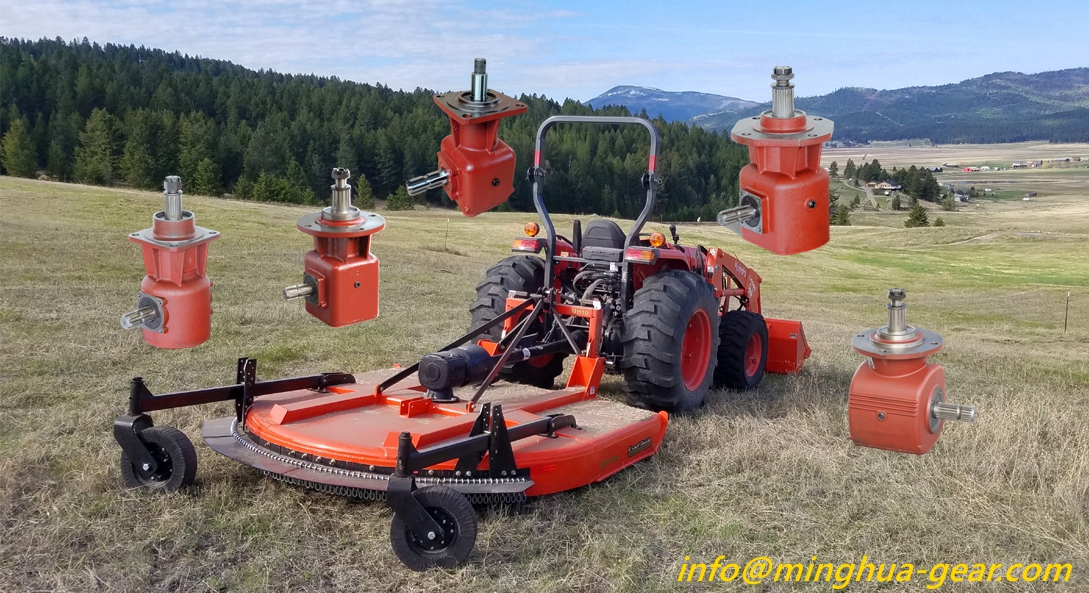
Choosing the appropriate gearbox for farm equipment involves considering several critical factors to ensure optimal performance,
reliability, and compatibility with the specific application. Here are the key steps and considerations:
### 1. Understand the Gearbox Application
- **Type of Equipment:** Identify the specific type of farm equipment (tractors, forage harvesters, rotary tillers, rotary cutter,
flail mower, corn harvester, fertilizer spreader…etc.) and its operational requirements.
- **Function:** Determine the primary function of the gearbox (e.g., power transmission, speed reduction, torque increase).
- **Environment:** Consider the operating conditions, including temperature, humidity, dust, and exposure to chemicals or moisture.
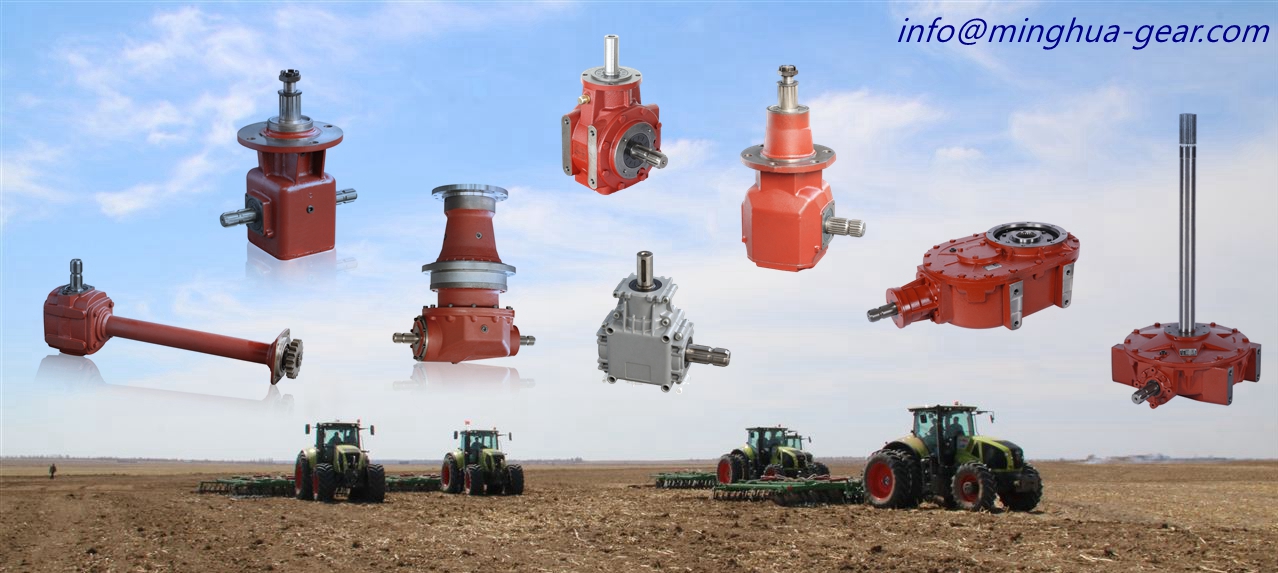
### 2. Determine Gearbox apply Power Requirements
- **Horsepower (HP) or Kilowatts (kW):** Calculate the power requirements of the equipment to ensure the gearbox can handle the load.
- **Torque:** Determine the required torque output, which is critical for tasks involving heavy loads or resistance.
- **Speed:** Consider the input and output speeds (RPM) to ensure the gearbox provides the appropriate speed reduction or increase.

### 3. Gearbox Types and Configurations
- **Parallel Shaft Gearbox:** Suitable for applications requiring high torque and compact design.
- **Right Angle Gearbox:** Ideal for applications where space constraints require a 90-degree change in direction.
- **Planetary Gearbox:** Offers high efficiency and compact size, suitable for high torque applications.
- **Worm Gearbox:** Provides high torque reduction ratios with low speed and is often used for lifting applications.
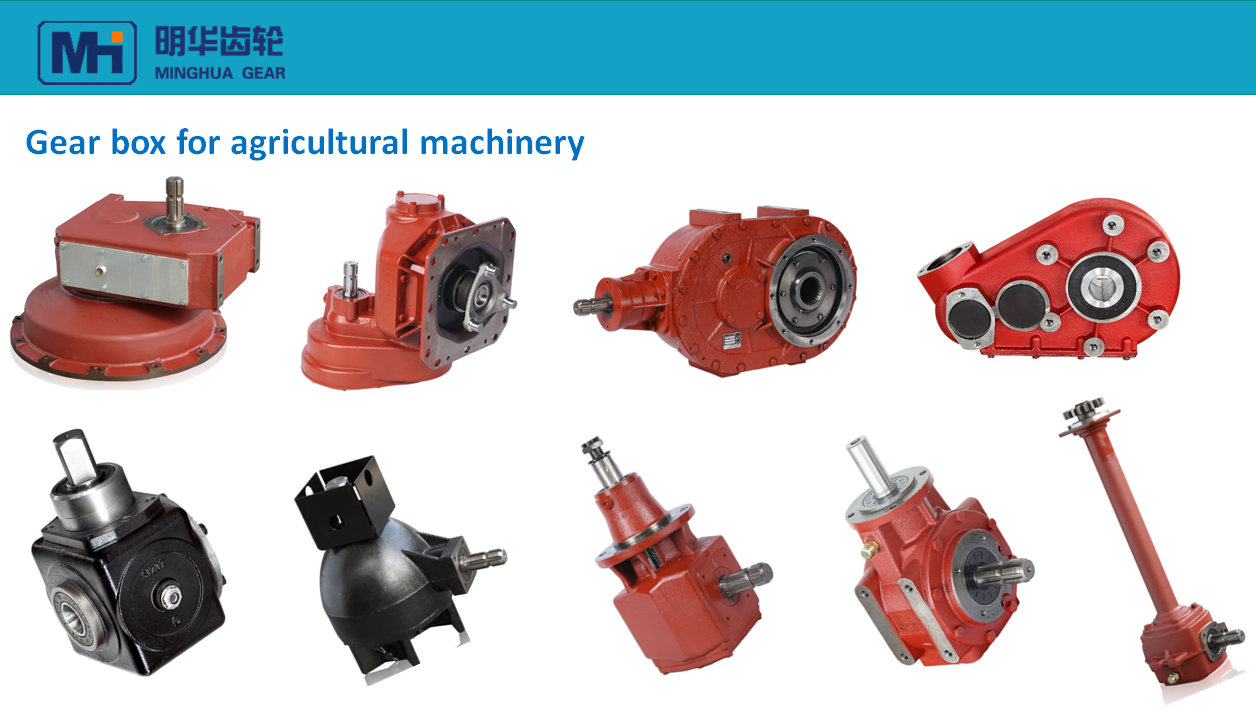
### 4. Load Capacity and Duty Cycle
- **Load Capacity:** Ensure the gearbox can handle the maximum load without failure. This includes considering both static and dynamic loads.
- **Duty Cycle:** Evaluate the duty cycle (continuous, intermittent, or cyclic) to choose a gearbox designed for the expected operational duration and frequency.
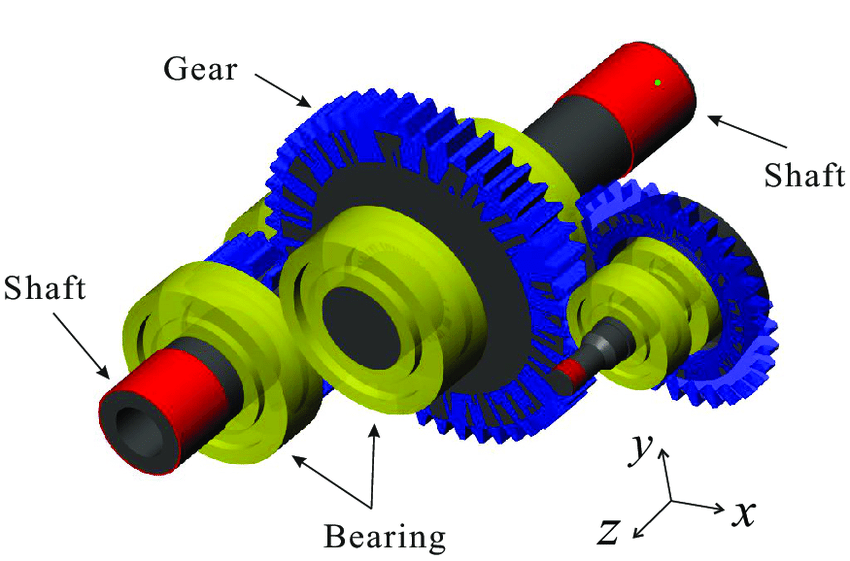
### 5. Efficiency and Performance
- **Mechanical Efficiency:** Select a gearbox with high efficiency to minimize energy loss and ensure more power is transmitted to the output.
- **Performance Requirements:** Consider factors like noise levels, vibration, and thermal performance to ensure the gearbox meets the specific performance criteria.

### 6. Durability and Maintenance
- **Material and Build Quality:** Choose gearboxes made from high-quality materials (e.g., hardened steel, cast iron, ductile iron ) for durability and longevity.
- **Maintenance Requirements:** Evaluate the maintenance needs of the gearbox, including lubrication intervals, ease of servicing, and availability of spare parts.
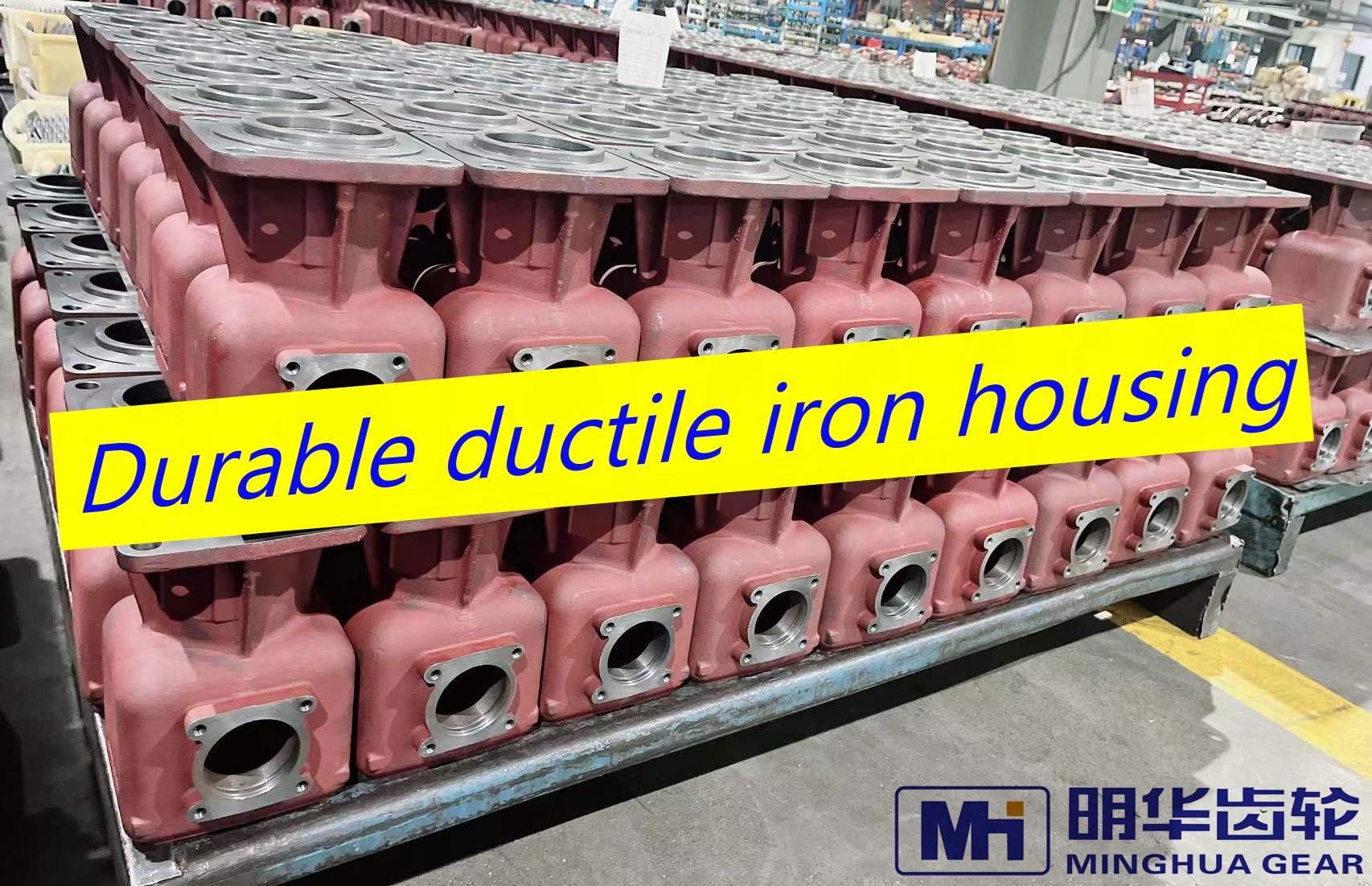
### 7. Compatibility and Integration
- **Mounting Configuration:** Ensure the gearbox can be easily integrated with the existing equipment, considering mounting options and space constraints.
- **Shaft Alignment:** Check for proper alignment of input and output shafts to avoid excessive wear and potential failure.
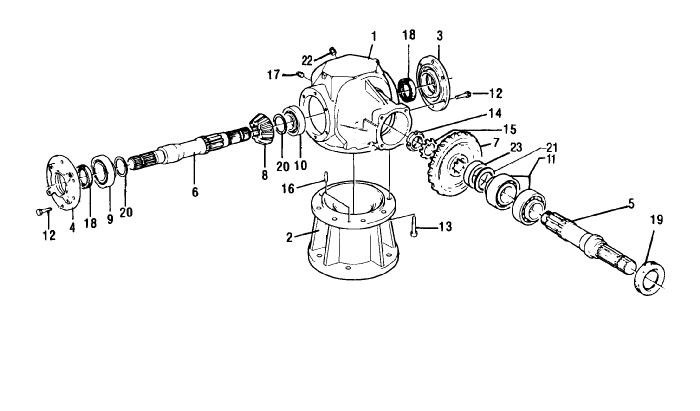
### 8. Manufacturer and Support
- **Reputation and Reliability:** Choose gearboxes from reputable manufacturers known for quality and reliability like Minghua Gear Co.,Ltd
with more than 30 years’ experience.
- **Technical Support:** Ensure the manufacturer offers adequate technical support, including installation guidance, troubleshooting, and after-sales service.
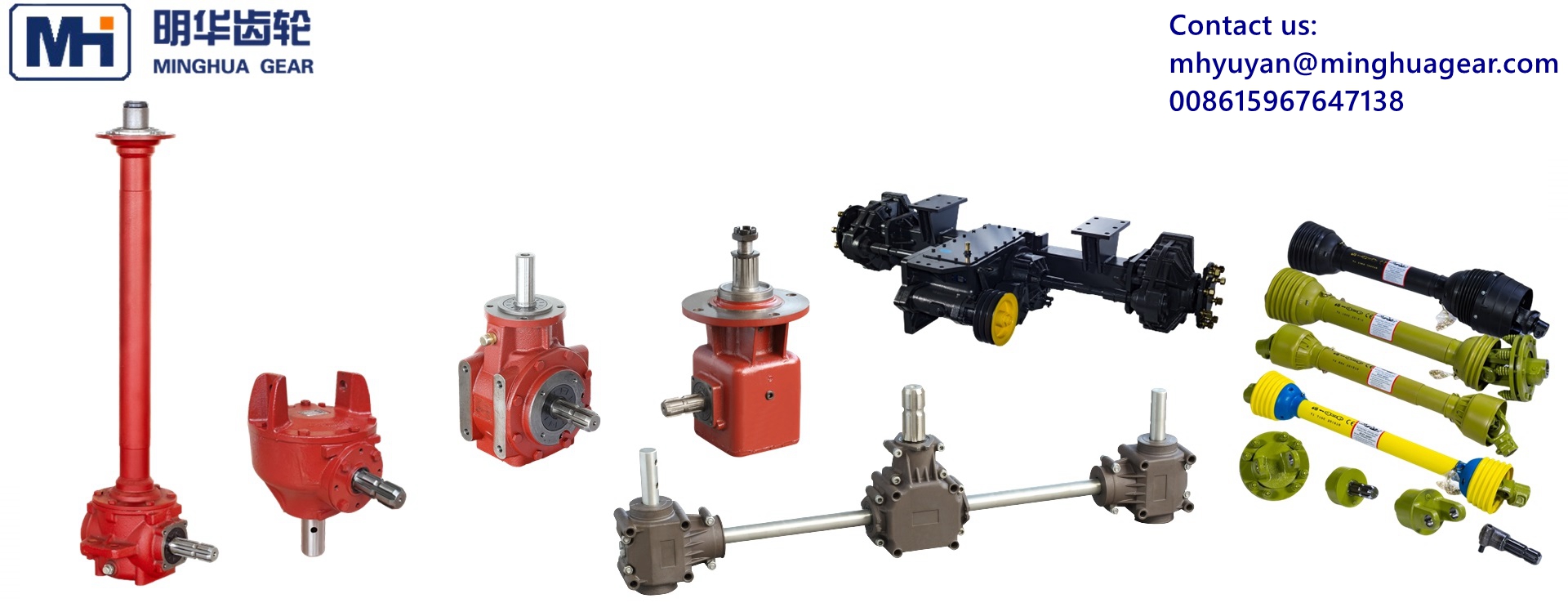
### Example Selection Process:
1. **Identify the Equipment and Application:**
- Tractor with a PTO (Power Take-Off) driven attachment.
- Primary function: Speed reduction and torque increase for a rotary tiller.
2. **Determine Power and Speed Requirements:**
- Tractor PTO power: 100 HP.
- Desired output speed: 200 RPM.
- Required torque: Calculate based on tiller specifications and soil conditions.
3. **Select Gearbox Type:**
- Right angle gearbox to fit the spatial configuration of the tractor and tiller.
4. **Evaluate Load Capacity and Duty Cycle:**
- Continuous operation in varying soil conditions.
- High load capacity to handle the resistance from soil.
5. **Consider Efficiency and Durability:**
- High-efficiency gearbox to minimize energy loss.
- Durable materials to withstand harsh agricultural environments.
6. **Check Compatibility and Support:**
- Ensure the gearbox fits the PTO shaft and mounting points.
- Choose a well-known manufacturer –Wenling Minghua Gear Co.,Ltd with good support and readily available parts.
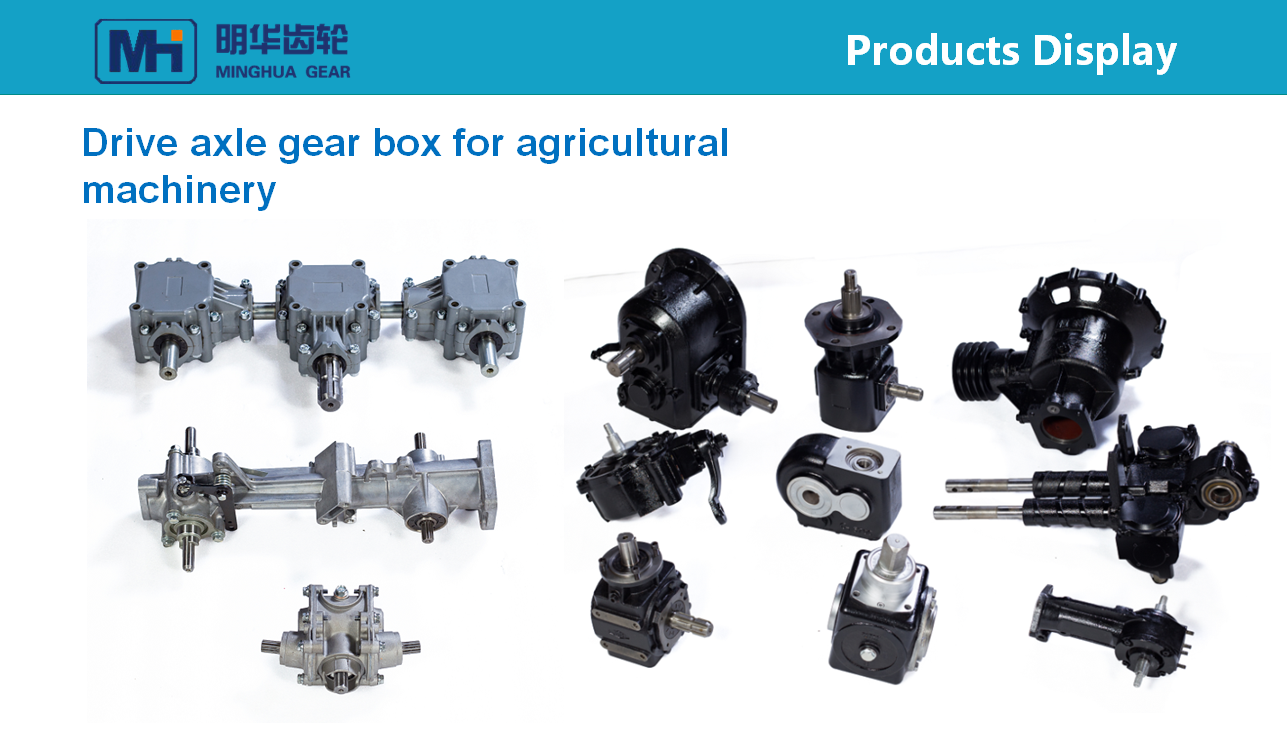
### Conclusion
By carefully evaluating these factors and following a systematic selection process,
you can choose the most appropriate gearbox for your farm equipment,
ensuring reliable and efficient operation tailored to your specific agricultural needs.




